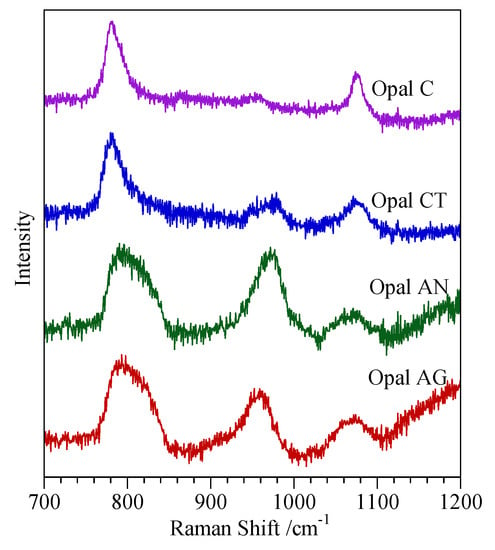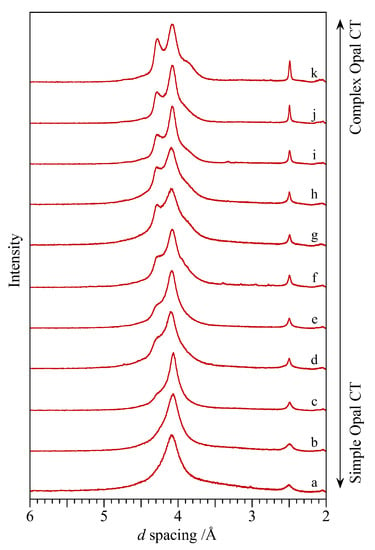Our examination of over 230 worldwide opal samples shows that X-ray diffraction (XRD) remains the best primary method for delineation and classification of opal-A, opal-CT and opal-C, though we found that mid-range infra-red spectroscopy provides an acceptable alternative. Raman, infra-red and nuclear magnetic resonance spectroscopy may also provide additional information to assist in classification and provenance. The corpus of results indicated that the opal-CT group covers a range of structural states and will benefit from further multi-technique analysis. At the one end are the opal-CTs that provide a simple XRD pattern (“simple” opal-CT) that includes Ethiopian play-of-colour samples, which are not opal-A. At the other end of the range are those opal-CTs that give a complex XRD pattern (“complex” opal-CT). The majority of opal-CT samples fall at this end of the range, though some show play-of-colour. Raman spectra provide some correlation. Specimens from new opal finds were examined. Those from Ethiopia, Kazakhstan, Madagascar, Peru, Tanzania and Turkey all proved to be opal-CT. Of the three specimens examined from Indonesian localities, one proved to be opal-A, while a second sample and the play-of-colour opal from West Java was a “simple” Opal-CT. Evidence for two transitional types having characteristics of opal-A and opal-CT, and “simple” opal-CT and opal-C are presented.

"The XRD patterns for Opal-CT exhibited a range of forms from quite simple patterns to more complex ones, but this range was a continuum. At the “simple” end, the Ethiopian POC occurred while the “complex” forms included the common opals. Play-of-colour opals may belong to either the opal-A or opal-CT groups. Thus, the terms “precious opal”, “play-of-colour”, “potch”, “common opal” and “fire opal” are best treated with caution, possibly only to be used within the trade, rather than in scientific studies."

Figure 5. A series of XRD patterns illustrating the structural changes across the opal-CT group. The patterns were arranged in order of increasing complexity of the main peak at ̴ 4.1 Å. Any subdivision between “simple” opal-CT and “complex” opal-CT is arbitrary, but patterns a and b are clearly distinct from patterns i, j and k. Note the progressive change in the sharpness and shape of the reflections at 4.1 and 2.5 Å. The specimens are (in ascending order from simplest to most complex): (a) Afar, Ethiopia (G32752), (b) Mezezo, Ethiopia (NMNH Eth 1), (c) Murwillumbah, Australia (G9964), (d) Acari, Peru (G33912), (e) Honduras (G1441), (f) Indonesia (OOC6), (g) Kazakhstan (M53407), (h) Nevada, USA (G32263), (i) Tanzania (G34238), (j) Nevada, USA (G31851) and (k) Tanzania (G NEW19).